Hi!
I am Yuba! I have a background in Astrophysics, but I work as Analyst in the Econonics and Investment Research team of AIMCo, where I help with data, economics research, implementing modern investment strategies and continuously expanding my skill set to lead advancements in data, mathematics and finance.
I am analytically minded and love solving complex problems by designing innovative strategies. I have a data-driven mindset fostered by years of research and analysis of astrophysical and financial data, modelling different phenomena and the evolution of different properties. I am passionate about translating complex real-world challenges into elegant data-driven solutions.
My journey has equipped me with a deep understanding of programming, data analysis, and statistics. I am proficient in Python and various statistical and visualisation tools, with a strong foundation in data manipulation and simulation techniques.
I have had the opportunity to perfect my explanation and presentation skills through teaching and tutoring math, physics and chess and through the numerous presentations, I have had to make throughout my PhD.
About (the real) me !
I grew up in a lovely city on the mediteranean coast of Algeria named Bejaia. Known for its gorgeous landscapes of sea and mountain and its role as a middle age knowledge hub where scientists such as Leonardo Fibonacci and Ibn Khaldoun studied.

_1.jpg)
Bust of the sociologist, philosopher and historian Ibn Khaldoun in front of the Casbah where he and numerous others scholars studied during the medieval era
.jpg)
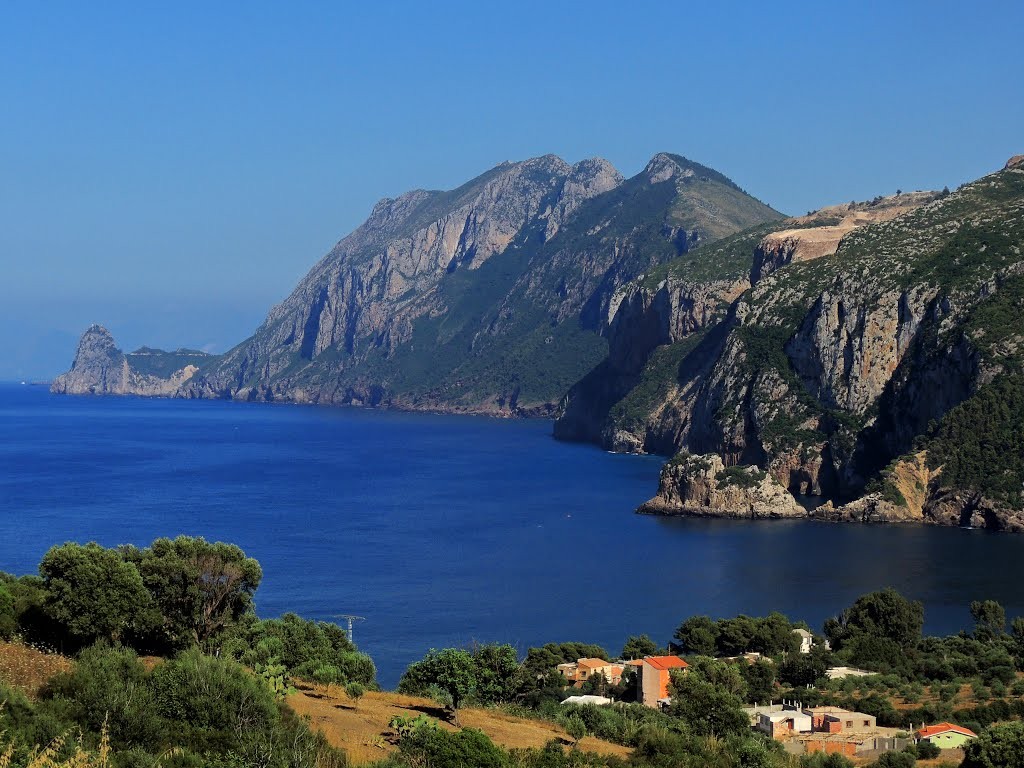

I moved to the capital of flanders, Lille in the north of France to do my Bachelor's degree in Physics when I was 18 !


I moved again, to the capital of France this time, Paris to complete my Masters in Physics in Sorbonne Université/École Normale Supérieure (ENS). I also studied History and Philosophy of Sciences when doing a Masters at Université Paris Diderot for a couple of years. And also did a Mathematical Modelling, Statistics and Machine Learning Masters at Université Paris Cité.

After 5 years living in Paris and 8 in France, I decided to leave and change continents (again) and I finally ended up in Waterloo, doing a PhD in Astrophysics at the University of Waterloo in Ontario.

Work, Research and Studies give sometimes the opportunity to work on side projects which involve
mastering different skills. Some of the projects that I have done can be found here :
(visit here for the full list.)
Power Outages with Severe Weather Events (ML) (GitHub)
The project was done in the context of the Erdos Institute Data Science Bootcamp. The goal was to
create a predictive model for Power Outages caused by Severe Weather Events. The model could help stakeholders
improve outage management and response strategies proactively. The main tools used were binary classification Machine
Learning models optimized for the best f1-score. Tree-based models were the best performing, and achieved up
to 35% average precision, significantly better than the expected 5% random chance.
Details and summary can be found
on the project's website:
(website)
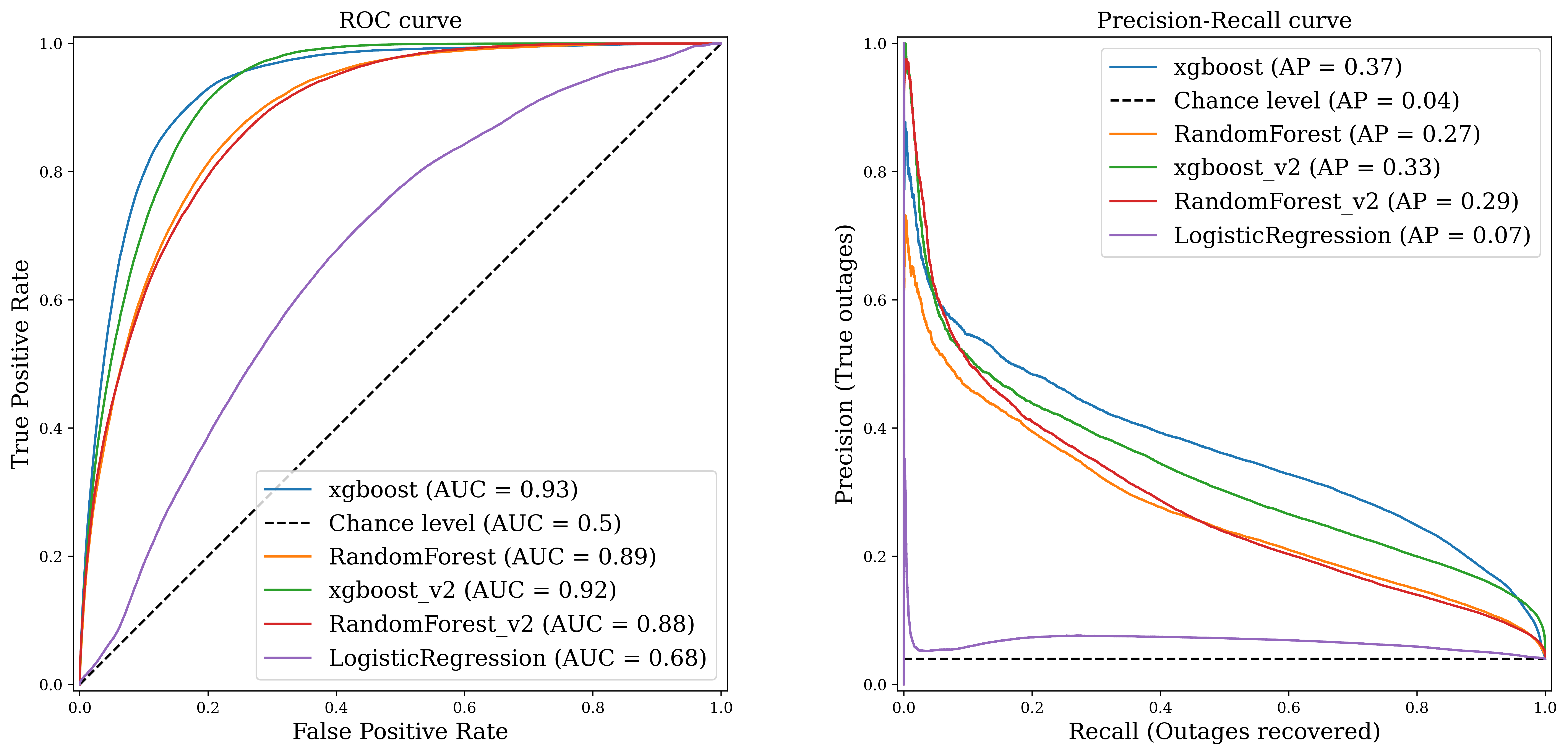
Simulating and visualising the Universe (GitHub)
When and where do clusters of galaxies form (red dots)
A zoom in how structures form in the Universe. Comparison of two cosmologies
A closer zoom in growth and mergers of galaxies and dark matter halos
Principal Component Analysis on Cluster age and Structure (GitHub)

-
What Cluster Structure Says About Their Age
2021-2023 - PhD project [GitHub]
University of Waterloo (Thesis)
Abstract— Because clusters form in bottom-up hierarchical way through mergers to larger structures, properties of their internal structures are related to their growth history. Young clusters will have more substructure in them, be less concentrated, have non-spherical shapes and less relaxed. This allows to estimate their age by looking at how they look. I studied how different structural properties relate a variety of age indicators through a Principal Component Analysis on different age and structural properties calculated in a simulation I have run. I have found that concentration and the offset between the centre of mass and the point of highest density can predict cluster age with good accuracy.
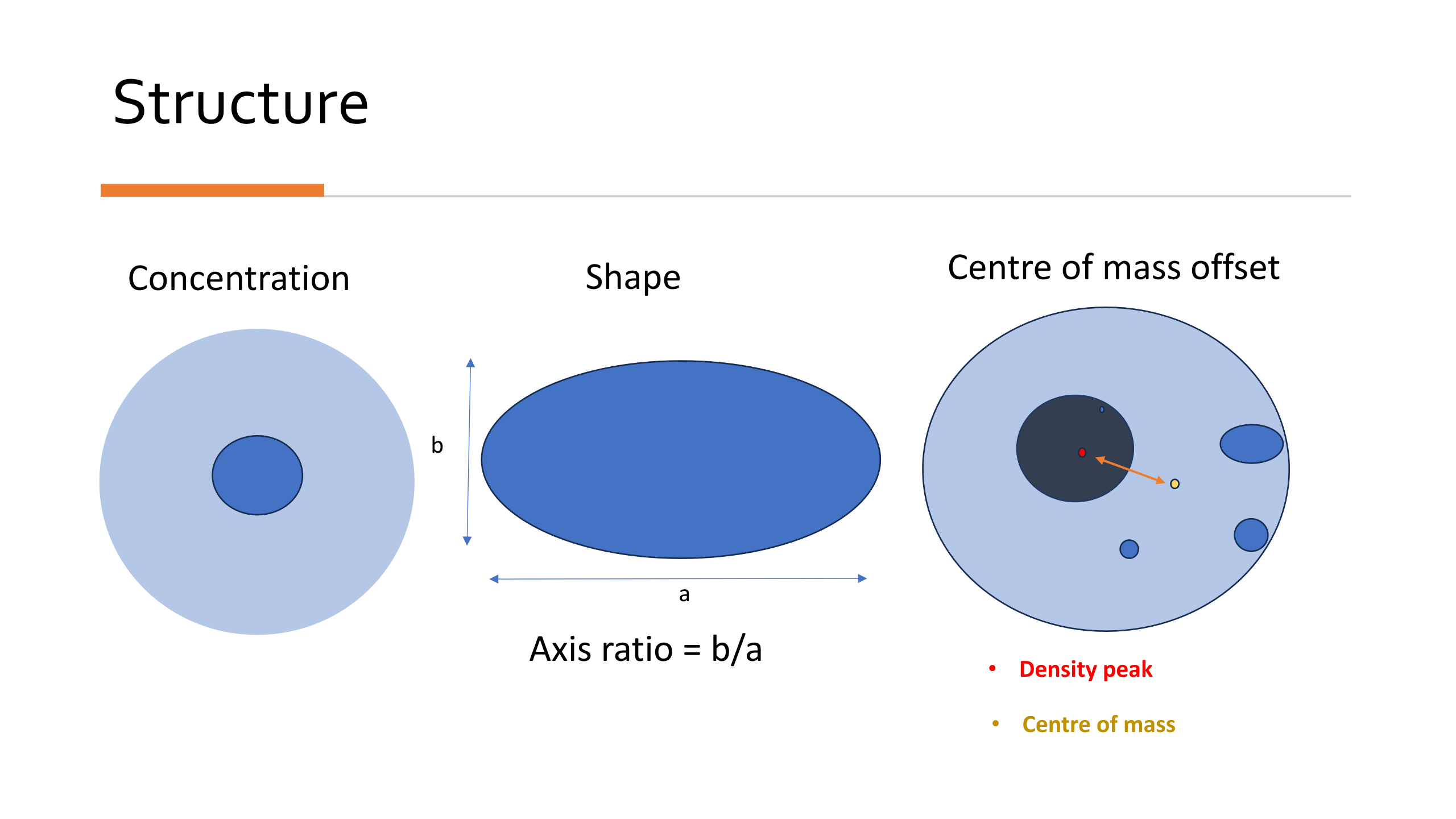

-
Technical skills involved
- Running a simulation of the Universe with parameters tuned for the goal
- Using remote high performance computer clusters (Compute Canada)
- Extensive use of Unix (linux) and shell (bash) as well as job scheduler slurm
- Calculating and coding physical properties of clusters (Python)
- Fitting density profiles with a parametric and non-parametric (Maximum Likelihood) method (Python)
- Using Principal Component Analysis (PCA) on different structural and age properties (Python)
- Visualisation of clusters (Python)
-
Results
- Generated a data set of particle positions as well as cluster properties and ages. This data set has been and will be used by a many students for a variety of projects.
- Helped understand the fundamental nature of cluster formation history and which quantities describe it the best.
- Demonstrated correlations between several cluster structural properties and their age. These include, concentration, shape and centre of mass offset.
- Found a practical way to estimate cluster age from observations that can be applied to data from future cluster surveys (e.g. Euclid, Roman, Rubin)
-
Constraining cosmology with cluster structure
2021-2023 - PhD project [GitHub]
University of Waterloo (Paper)
Abstract— Since cluster age depends on cosmology and cluster age produces different internal structures, we can expect that we can constrain cosmological parameters, specifically Ωm-the amount of matter in the Universe- and σ8-how clumpy the matter distribution in the Universe is. I ran a set of 25 High-Resolution N-body cosmological simulations, producing more than 100Tb of data, each with different cosmological parameters. I found that the centre of mass offset, shape and concentration are sensitive to Ωm and σ8 and can be used to constrain cosmology.
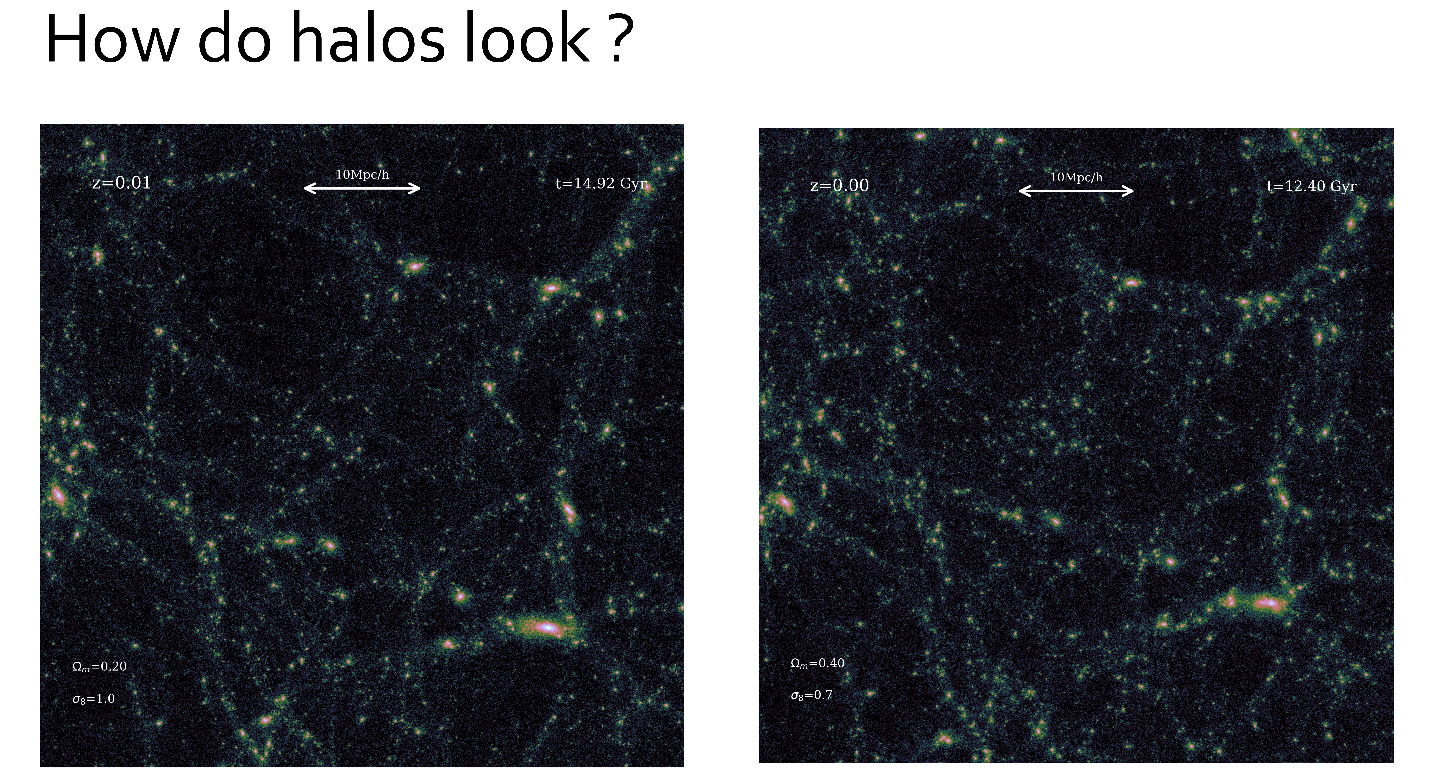

-
Technical skills involved
- Running a set of 25 High Resolution simulations of the Universe
- Using remote high performance parallel computing clusters (Compute Canada). A total of 202 cpu-years was necessary to generate all the simulations.
- Automating data collection, transfer, cleaning, and post-processing of each simulation
- Optimizing code to efficiently calculate the physical properties of galaxy clusters for each of the 25 simulations. This involved fits and calculations for 300,000 objects for each of the 25 simulations (Python)
- Using interpolation methods (Python)
- Visualisation, creation of videos of the evolution of the universe with time
-
Results
- Generated a large (150Tb) data set including: simulation output at 119 different times in Universe age, dark matte halos at each time, structural properties of each. Repeated 25 times of each cosmology. This data is set to be the basis of many ongoing and future projects.
- Successfully demonstrated that cluster structure can be used to constrain cosmological parameters.
- Estimated the number of observed clusters necessary to use each structural property to have competitive constraints (around 100,000). This is less than the expected number of cluster detection from the Euclid space telescope.
- This new method of constraining cosmology is a new, innovative, complementary way to help gain insight in the properties of the Universe, understand dark matter halos, and solve the current tensions in cosmology.
-
The Cosmological Dependence of Cluster Age
2019-2021 - PhD project [GitHub]
University of Waterloo (Paper)
Abstract— Galaxy clusters are massive objects composed of hundreds or thousands of galaxies, hot gas and an extended dark matter (DM) halo. They are the largest gravitationally bound structures in the Universe. As such, they result from the growth and collapse of the highest peaks in the density perturbation field. Because fundamental properties of the Universe determine the statistics and evolution of those peaks, clusters can be used for cosmology. The most common method to do that is to use their abundance, which requires counting them in bins of mass and redshift (distance). But this has the disadvantage of not distinguishing between high peaks early, or large growth which would result in similar number of observed clusters today. However, in the first scenario clusters would form earlier than in the latter. I used analytical models to predict exactly how cluster age varies with cosmology, and then tested the results by analysing simulation data from different sources.

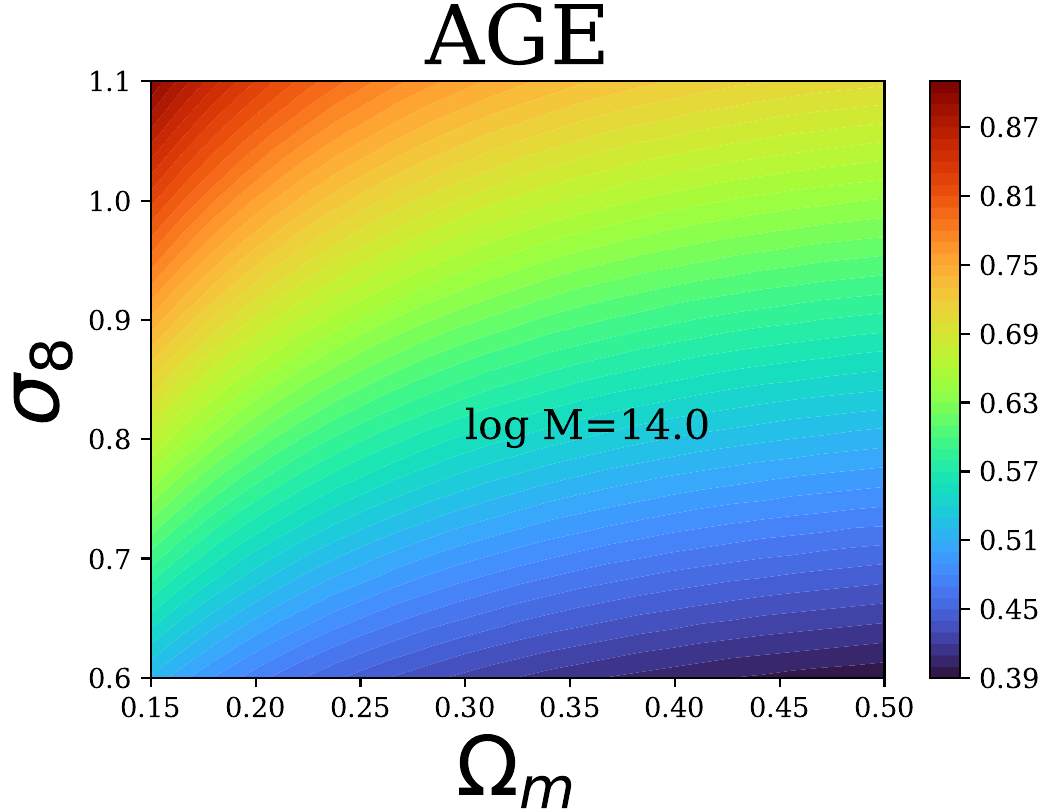
-
Technical skills involved
- Mathematical modelling of cluster formation
- Coding mathematical model in Python
- Data acquisition from publicly available simulations
- Analyzing, cleaning, and homogenising raw data from different sources with different formats and information (Python)
- Calculating ages for millions of clusters from simulation data (Python)
- Comparing to analytical model predictions (Python)
- Visualisation (Python)
-
Results
- Demonstrated that cluster age varies by 100% accross the Ωm and σ8 plane
- Found a new way to gain information about the Universe fundamental properties
- Demonstrated that the new method is complementary with existing methods using the abundance of clusters
- Predicted that this method, applied to data from forthcoming surveys (Euclid, Rubin, Roman) can constrain σ8 up to 10% accuracy
-
Assessing the accuracy of the concentration measurements of galaxy clusters detected by the Euclid space telescope
Summer 2016
Institut d'Astrophysique de Paris (IAP) ( Technical report)
Abstract— The Euclid space telescope is a European Space Agency (ESA) mission whose aim is to help understand the mysteries of Dark Matter and Dark Energy by looking at structures of the Universe and generating a 3D map of the structures within it. Among the structures Euclid will detect are Clusters of Galaxies, the largest gravitationally bound objects in the Universe. In order to be ready to use the data the telescope will provide, tests using synthetic data are performed. My role was to use those simulations to measure the density profiles of galaxy clusters and compare them to an ideal case to assess of the accuracy of those measurements. This involved collecting and cleaning simulation data, finding the best model parameters for the density of profile of each cluster using a Maximum Likelihood estimator and minimisation routine in Python, as well as statistical tests such as the KS test. My tests lead to the discovery of faulty simulation data, which were subsequently removed, saving mistakes from all subsequent tests that would have used that simulation.
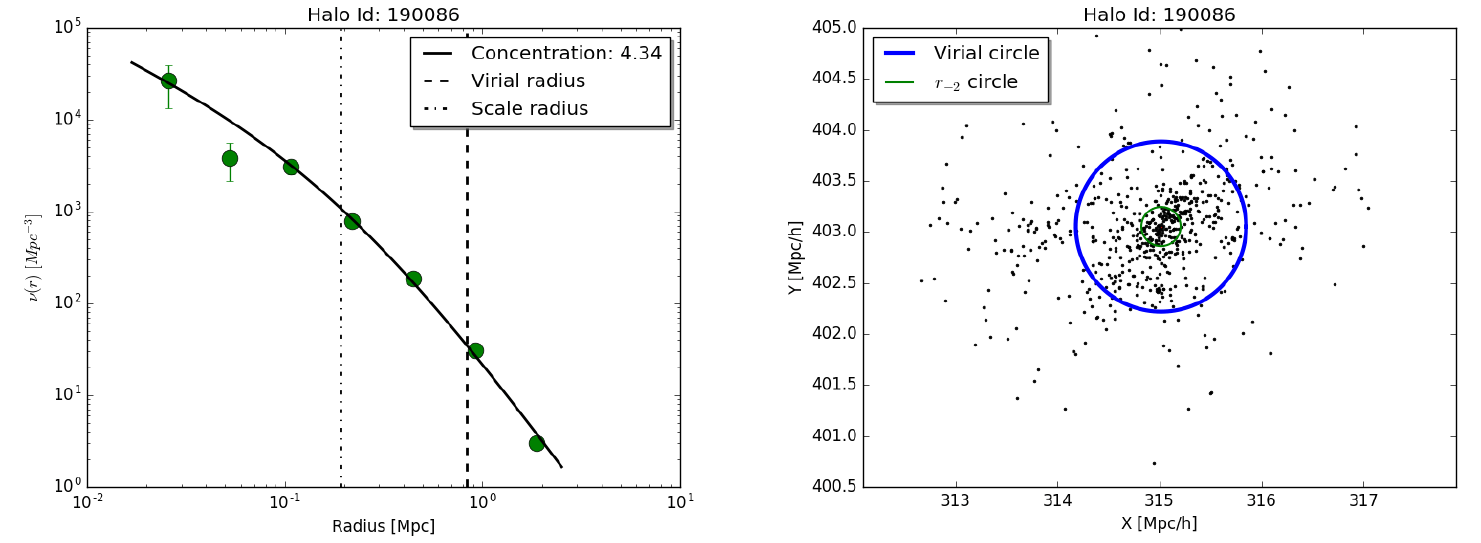
-
Technical skills involved
- Creating a model for the probability density function of galaxy distribution in a cluster
- Using non-parametric maximum likelihood inference to find the best parameters of the cluster density profiles (Python)
- Writing an optimization and minimisation routine to apply to the likelihood
- Collecting, cleaning and analyzing simulation data
- Using statistical Kolmogorov-Smirnov (KS) tests to assess the quality of the fit
-
Results
- Discovered a faulty simulation data set in the Euclid testing pipeline by noticing abnormal values of concentration. The data set was subsequently removed from the Euclid preparation pipeline, and was likely to cause errors in tests and calibrations of the space mission
- Successfully demonstrated that cluster concentration can be estimated with a 70% accuracy, at best. This is important information regarding prospects and the type of science that will be able to be performed with the mission.
-
Indirect detection of Dark Matter using the Fermi-LAT source catalog
Spring 2015
University of Amsterdam (Report)
Abstract— Little is known about the particle nature of Dark Matter, but the most common model is a Weakly Interactive Massive Particle (WIMP) that is not subject to the electromagnetic interaction. However, two WIMP particles can interact with each other and the resulting particles would emit radiation, that we can in theory detect. Because dark matter represents the skeleton of the structures of the Universe, dark matter clumps, called halos and subhalos, surround our galaxy and are typically also the host of smaller galaxies, called satellite galaxies. If dark matter is indeed composed of WIMPS, we would expect to detect gamma-ray emissions from the dark matter subhalos around our galaxy. These would appear as gamma-ray sources. It happens that in the Fermi-LAT source catalog, there are sources which are unidentified, and these are primary candidates for dark matter subhalos emitting gamma-ray. I studied these sources, calculating their luminosities by assigning them distances with a monte carlo method. Then setting limits to WIMP particle properties given the maximum luminosity calculated.


-
Technical skills involved
- Data acquisition and cleaning from Fermi-LAT telescope catalogs (Python)
- Modeling the probability distribution of satellite galaxies in the milky-way
- Writing a performing Monte-Carlo simulations to assign distances to sources (Python)
- Visualisation (Python)
-
Results
- Successfully estimated the maximum number of the unassociated sources that can be dark matter subhalos for different scenarios.
Teaching Experience
I love teaching!
Fortunately, I had the opportunity to teach in many circumstances, paid and voluntary :
Teaching Assistant during my PhD:
- TA - UW - F22 - PHYS 249: Computational Physics and Linear Algebra
- TA - UW - F22 - NE 451: Simulation Methods (C++ and Matlab)
- TA - UW - S22 - PHYS 365: Mathematical Physics 2
- TA - UW - W22 - PHYS 375: Stars
- TA - UW - F21 - PHYS 111: Physics 1
- TA - UW - S21 - PHYS 270L: Astronomical Observations, Lab
- TA - UW - W21 - PHYS 370L: Astronomy Lab 1
- TA - UW - F20 - SCI 238: Introductory Astronomy
- TA - UW - W20 - PHYS 234: Introduction to Quantum Physics
- TA - UW - F20 - SCI 238: Introductory Astronomy
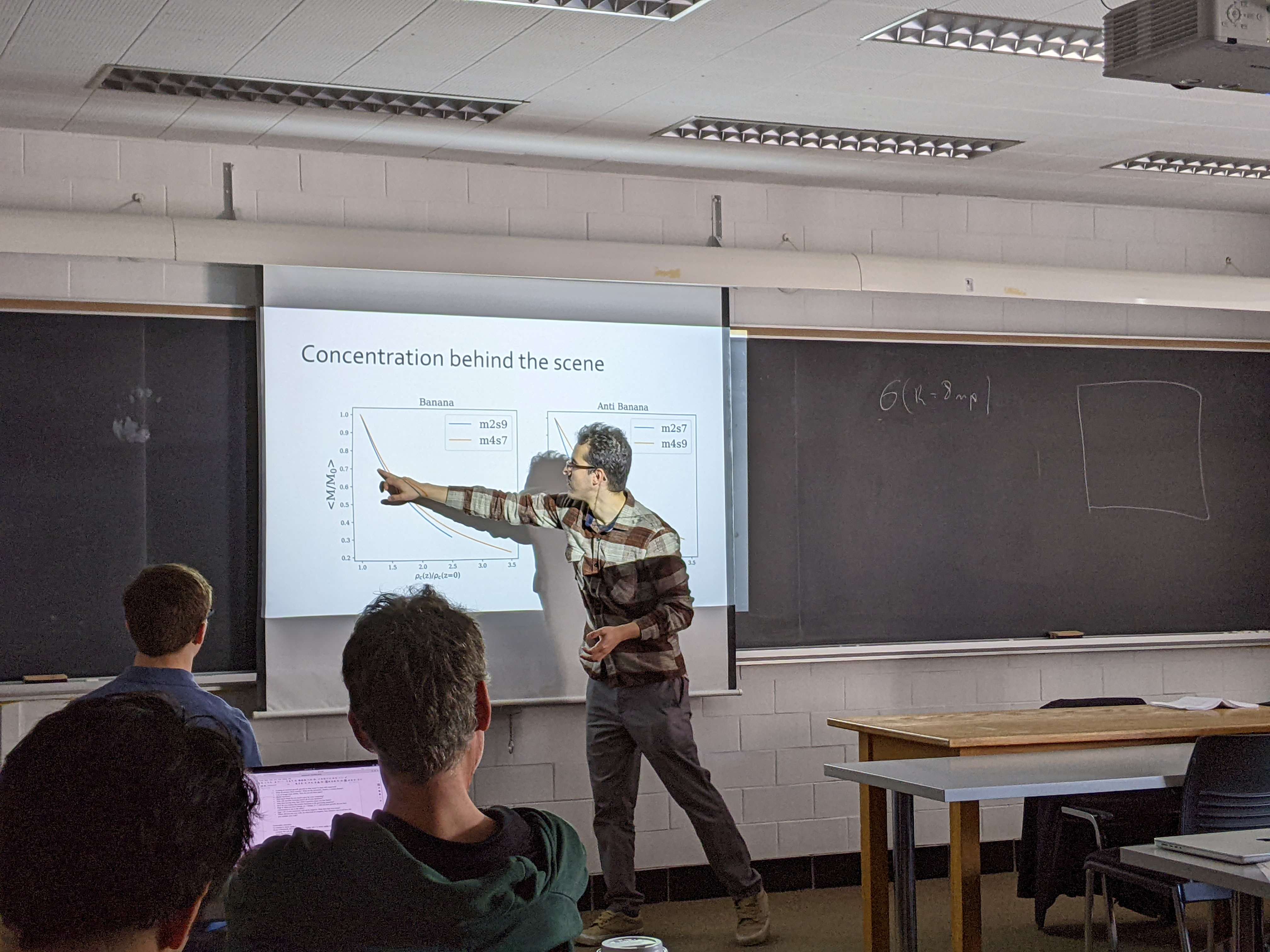
Chess teacher in elementary schools: Lille, France 2013-2014:
Regional School for Visually Deficient students
I had the great experience of teaching chess for visually deficient students, I had a lot of fun coming up with exercises suited for them and watching them progress throughout the year. Culminating in a participation and good performance in an informal tournament with kids from other schools.
Victor Duruy School
I had in charge two classes of 20 students with different chess levels. I created lessons, games and learning exercises adapted to all levels. Many students joined the local chess club as a result.
Tutoring of High School and University students in Math and Physics 2012-2019
I helped and tutored nearly 100 students in various subjects of mathematics and physics, including advanced topics at university level such as linear algebra, advanced calculus, mechanical physics and mathematical physics. I also volunteered in helping high school students from underprivileged areas of the Paris region, for struggling students and students who wanted to get into elite schools.
Volunteering and Organizing
I believe that the well-being in any organization or workplace is one of the most important factors of success. That is why I got involved in OrganizeUW and helped advocate for better and healthier working and studying conditions for graduate students of the University of Waterloo

Role:
- In charge of organizing the Faculty Of Science
- Recruiting and mentoring new organizers
- Contacting and collaborating with different student organizations
- Talking and listening to students and workers about their experience, major issues,
what is good and not good about their specific departements
- Organizing events
- Collaborating with other organizers on all of the above
- Gathering and analyzing data, documenting.
-
Chess !
I have been playing (and teaching at times) chess since I was a kid. I have always loved sitting down, for hours trying to understand everything there is about a given position. It has probably shaped and helped my analysis, memory, concentration and calculation skills. As well as my social ones !

-
Travel
If it was not clear from the fact that I changed countries 3 times and continents 2, I am a fundamentally curious and adventurous person, I love travelling, meeting new people understanding new cultures and discovering amazing food wherever I go. Next places I'd love to visit are south-east asia and latin america !

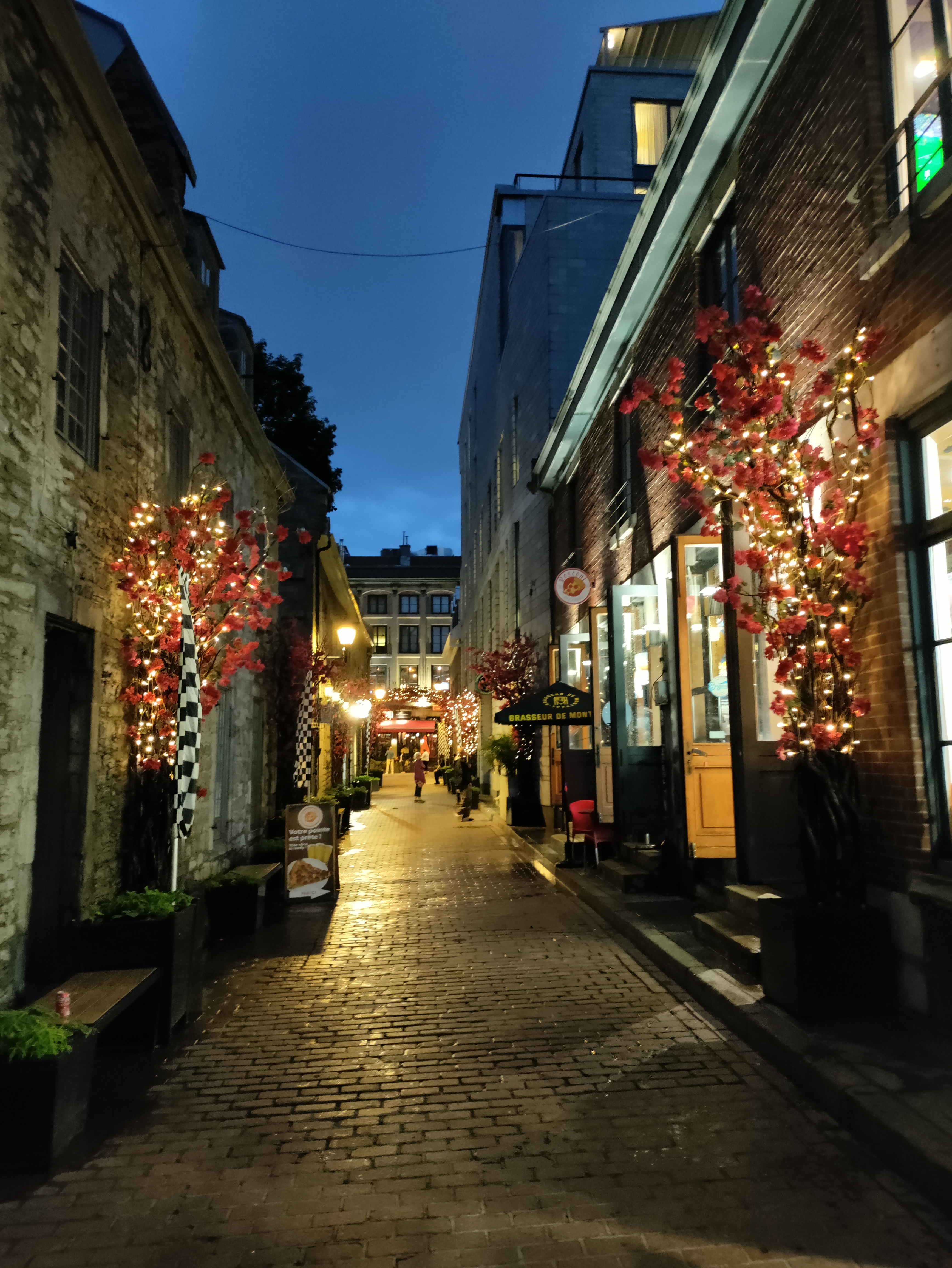


-
Cooking (and eating !)
Of the many ways I like to spend my weekends, cooking might be the most relaxing (and delicious), Algerian, Italian and Belgian dishes are my go to, but trying to learn other cuisines.
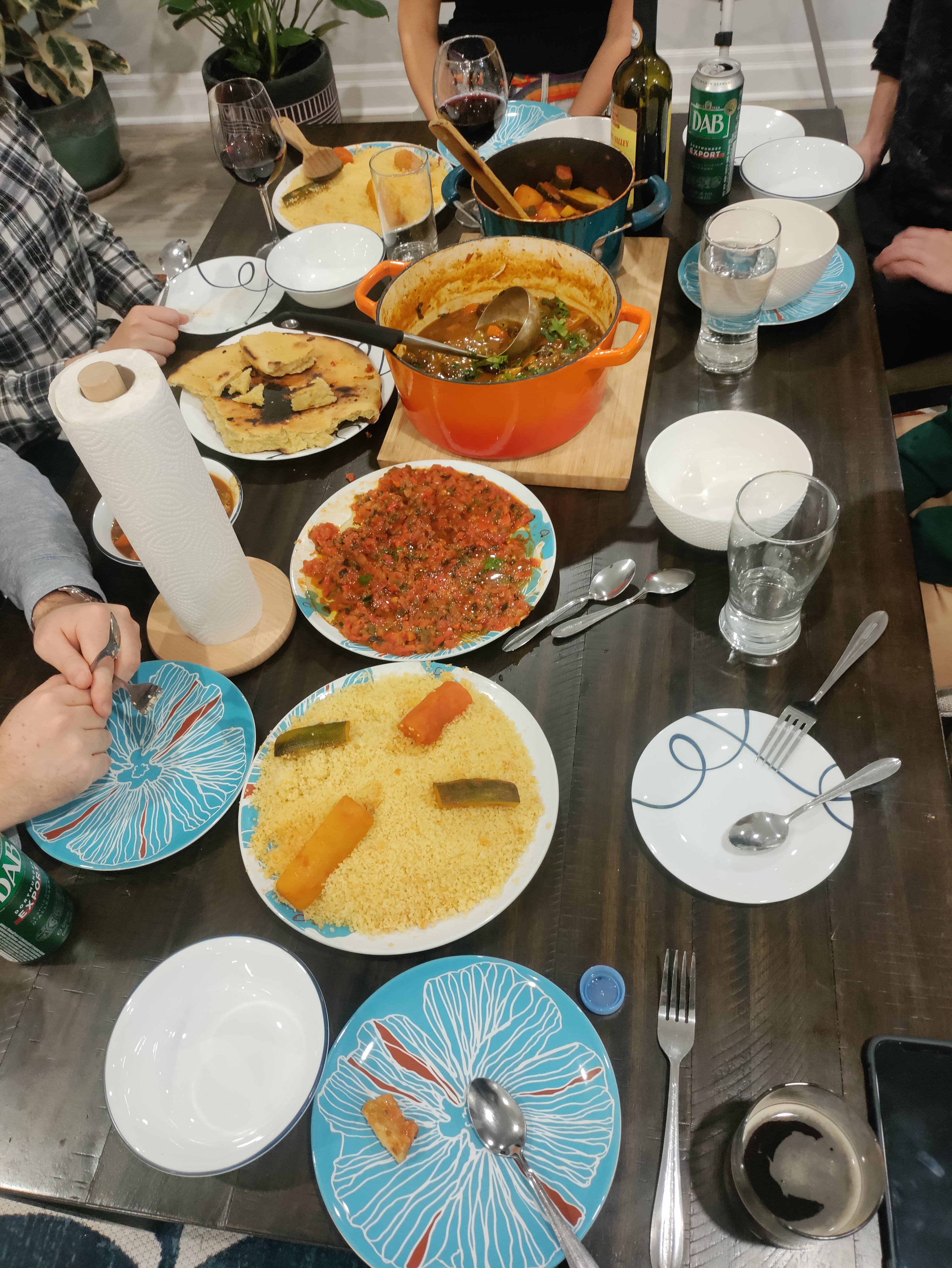
-
Languages
Learning new languages is always a fun challenge, I speak Amazigh (my native language) and speak fluently Arabic, French and English, and trying to improve my Spanish at the moment !



